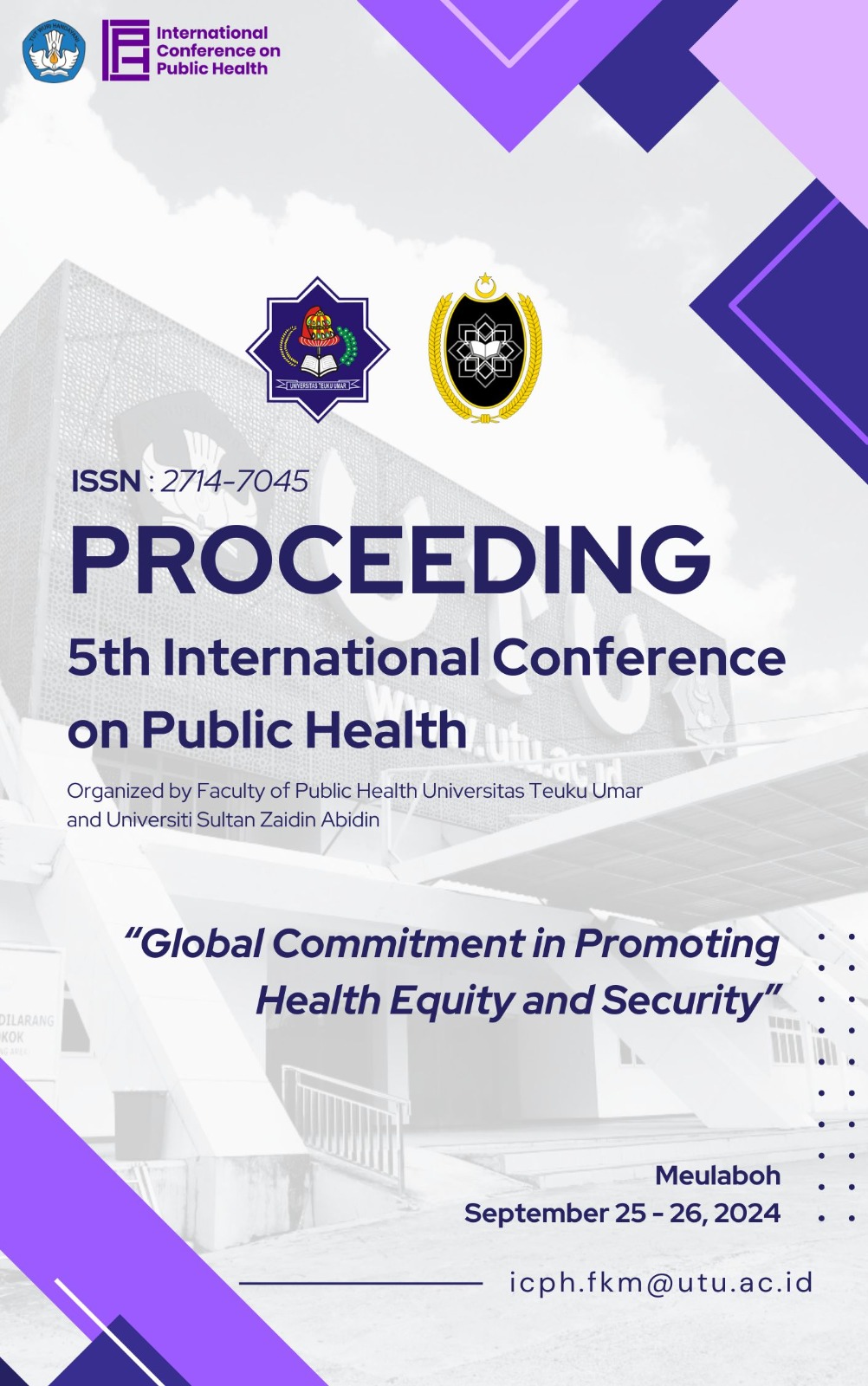Associations between Occupational Factors and Community Leader Support with Latrine Ownership in Southwest Aceh
Keywords:
Boyolali, Chikungunya, OutbreakAbstract
More than 800 million people defecate in the open rather than using latrines. Although the global mortality rate from diarrheal diseases is declining, poor water and sanitation is responsible for hundreds of thousands of child deaths, as well as high rates of diarrhea, diarrhea-induced malnutrition and stunting in children to date. This study aims to see how the differences in occupation, income and support from community leaders in community groups who have latrines and those who do not. The method used in this study was Observational Analytic with a Cross Sectional approach with a sample of 100 respondents. The statistical tests used were Chi Square and Mann-Whitney. This research was conducted in 2021 in Southwest Aceh Regency. The results showed that there was no relationship between occupation (p=0.604) and support from community leaders (p=0.615) with latrine ownership. Latrine ownership is driven by behavioral factors that change with the support of various parties, both support provided in the form of facilities and support in terms of education provided.
References
Abubakar IR.2018. Exploring the determinants of open defecation in Nigeria using demographic and health survey data. Science of the Total Environment. 637–8: 1455–65.
Barliansyah, dkk.2019. Faktor Yang Mempengaruhi Stop Buang Air Besar Sembarangan di Wilayah Kerja Puskesmas Simeulue Barat. Jurnal Kesehatan Cehadum.
Grojec A.2015. Progress on sanitation and drinking water (2015 update and MDG assessment). Switzerland: UNICEF and World Health Organization
Hardiani,E. 2008. Hubungan tingkatan pendidikan dengan pengetahuan serta pendapatan dengan kepemilikan jamban keluarga di Bloto Kecamatan Prajurit Kulon Kota Mojokerto tahun 2005.Skripsi: Mojokerto
Jain A,et.al. 2019. Sanitation in rural India: Exploring the associations between dwelling space and house- hold latrine ownership. International Journal of Environmental Research and Public Health. 16 (5): 734.
Larosa, WPJ.2018. Faktor-faktor yang berpengaruh perilaku masyarakat dalam penggunaan jamban di wilayah puskesmas Aek Parombunan kota sibolga (skripsi). Fakultas Kesehatan Masyarakat Universitas Sumatera Utara.
Meyer,JO.,et.al. 2019. Long-term impact of a community-led sanitation campaign in India, 2005–2016. Bull World Health Organ ; 97:523-53A.doi: http:/ / dx.doi.org/ 10.2471 / BLT.18.221572
M. Atunyambe, dkk. 2011. Bencana tanah longsor di Uganda timur: sanitasi situasi air, sanitasi dan kebersihan di kamp Bulucheke, distrik Bududa. Pusat Bioma; Kesehatan lingkungan. http://www.ehjournal.net/content/10/1/38
Park MJ, et.al. 2016. Quantifying accessibility and use of improved sanitation: towards a comprehensive indicator of the need for sanitation interventions. Scientific Reports.1–7.
Samosir, K., dkk (2019). Peranan Perilaku Tokoh Masyarakat Terhadap Kepemiikan Jamban Sehat di Tanjung Pinang. Prodi DIII Kesehatan Lingkungan Poltekkes Kemenkes Tanjungpinang, Indonesia.
Steele R. 2019. Progress on household drinking water, sanitation and hy- giene. New York: WHO/UNICEF Joint Monitoring Programme for Water Supply and Sanitation (JMP). 140: 2000–17.
Shakya HB, Christakis NA, Fowler JH.2015. Social network predictors of la- trine ownership. Social Science & Medicine.: 129–38.
WHO. Kemajuan dalam air minum dan sanitasi : Pembaharuan Program Pemantauan Bersama 2914. Jenewa Organisasi Kesehatan Dunia. Unicef. 2014
Wankhade K.2015. Urban sanitation in India: key shifts in the national poli-cy frame. Environmentalist and Urban. 27 (2): 555–72.
Yulyani, et.al.2021. Patterns and Determinants of Open Defecation among Urban People Kesmas: Jurnal Kesehatan Masyarakat Nasional (National Public Health Journal). 16 (1): 45-50. DOI: 10.21109/kesmas.v16i1.3295





